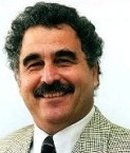
Plenary Lecture
Regulation of Sperm Capacitation by Actin Modulation

Professor Haim Breitbart
The Mina & Everard Faculty of Life Sciences
Bar-Ilan University
Israel
E-mail: breith@mail.biu.ac.il
Abstract: Actin polymerization and development of hyperactivated (HA) motility are two processes that take place during sperm capacitation. Actin polymerization occurs during capacitation and prior to the acrosome reaction fast F-actin breakdown take place. The increase in F-actin during capacitation depends upon inactivation of the actin severing protein, gelsolin, by its binding to phosphatydilinositol-4, 5-bisphosphate (PIP2) and its phosphorylation on tyrosine-438 by Src. Activation of gelsolin by causing its release from PIP2 caused F-actin breakdown and inhibition sperm motility, which could be restored by adding PIP2 to the cells. Reduction of PIP2 synthesis inhibited actin polymerization and motility, and increasing PIP2 synthesis enhanced these activities. Furthermore, sperm demonstrating low motility contained low levels of PIP2 and F-actin. During capacitation there was an increase in PIP2 and F-actin levels in the sperm head and a decrease in the tail. In sperm with high motility, gelsolin was mainly localized to the sperm head before capacitation, whereas in low motility sperm, most of the gelsolin was localized to the tail before capacitation and translocated to the head during capacitation. We also showed that phosphorylation of gelsolin on tyrosine-438 depends on its binding to PIP2. Activation of phospholipase C by Ca2+-ionophore or by activating the epidermal-growth-factor-receptor inhibits tyrosine phosphorylation of gelsolin. In conclusion, the data indicate that the increase of PIP2 and/or F-actin in the head during capacitation enhances gelsolin translocation to the head. As a result the decrease of gelsolin in the tail allows keeping high level of F-actin in the tail, which is essential for the development of HA motility.
Brief Biography of the Speaker: Haim Breitbart obtained his PhD in Biochemistry in 1976 from the department of Life Sciences, Bar-Ilan University, Israel. Currently he is a Professor (Emeritus) of Biochemistry at the Faculty of Life Sciences, Bar-Ilan University,Israel. He is the former Dean of this faculty and former Vice Dean of the Faculty of Medicine, Bar-Ilan University. In his research, he focuses on understanding the signaling mechanisms involved in sperm capacitation and the acrosome reaction, two essential processes to achieve successful fertilization. He is the author of 147 peer reviewed articles and book chapters.